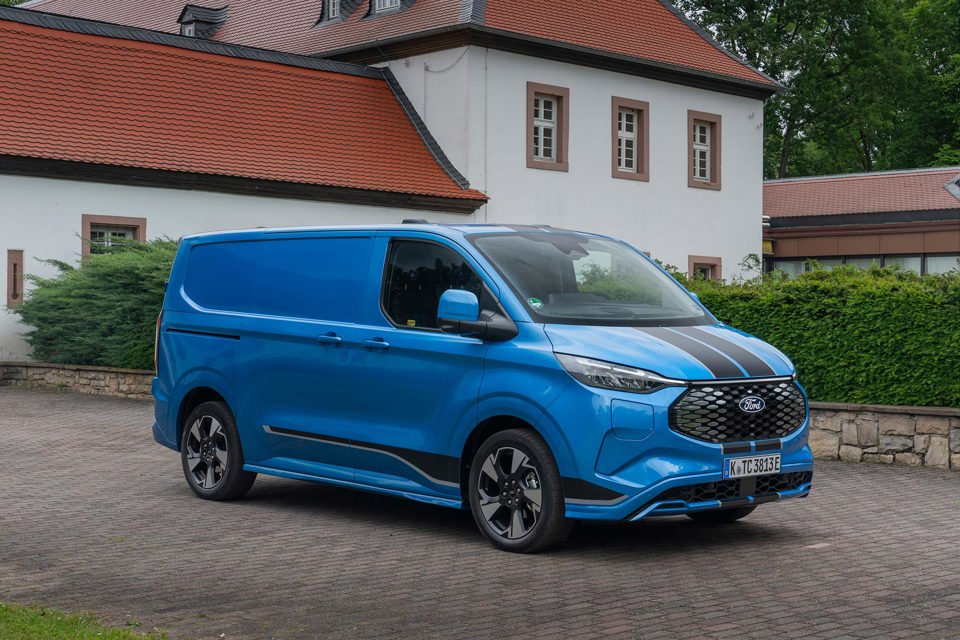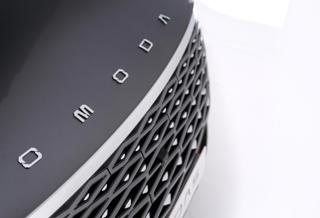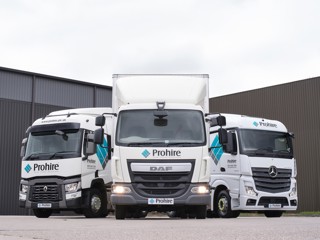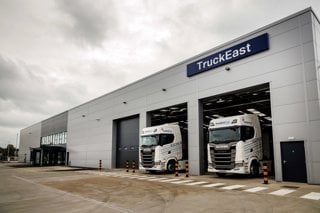The new Ford Transit Custom has a square steering wheel. Nothing revolutionary in that; Austin ditched the idea half a century ago during the summer of 1974 after a year’s controversial service in the Allegro.
But the Transit’s design cleverly tilts, making an impromptu table or desk and is something unique to the UK’s as well as Ford’s best-selling vehicle.
It’s just one of the many modern refinements today’s light commercial drivers enjoy in a market sector which, not so long ago, signalled a passport to purgatory for anyone stuck behind the steering wheel.
Basic wasn’t the word where even exterior paint was listed as an optional extra.
Take the current Vauxhall Combo against its ancestor of 60 years ago, the Bedford Viva HA Van which survived in service for two decades until the Astra replaced it.
Costing £394 at launch, that’s around £6,500 in today’s money with a further £28 (£454) demanded for a passenger seat and sun visor and paint.
By the time production ended in the early 1980s, paint, halogen headlamps, laminated windscreen and a temperature gauge were still listed as extras.
Compare the Combo to the far more accomplished Astravan of 30 years ago. ‘Essentials’ such as power steering, five-speed transmission, central locking, electric windows and a driver’s airbag were still options with anti-lock brakes, air-conditioning and infotainment systems featuring CarPlay but twinkle in a developer's eye. And what’s cup holders?
Today’s base model Transit, called the Leader, comes with all of the above plus a six-speed gearbox, anti-lock brakes, skid control, auto stop-start, remote central locking, power windows and door mirrors, air conditioning, three cloth covered seats, adjustable steering wheel, armrests, cup holders, a DAB radio with Bluetooth, USB ports, 12v power sockets, auto (Bi-Xenon) headlamps and more – bettering a few passenger cars.
Yet for all this, the entry level is only the third best seller out of the Custom range with a mere 3.5% take up.
The most popular pick, says Ford, is the mid-range Limited which enjoys a massive 60% approval – double that of the lower run Trend trim – despite being the best part of £4,000 pricier.
This shift in chooser emphasis is a far cry from the once market favourite, the penny-pinching 80 Popular.
Ford, of course, isn’t the only manufacturer to see a change in the landscape.
Stellantis says its version mix varies by brand (Vauxhall, Peugeot, Citroen, Fiat Pro).
For instance, Peugeot on the Partner (small/K9) and Expert (medium/K0) is more biased towards entry-level trim.
“This is the result of some large national fleet customers (e.g. Royal Mail),” says Brad Miller head of LCV product and pricing at Stellantis.
“The other three Stellantis ProOne brands in the UK are more balanced between our entry and higher spec trims (55-65% entry mix as an average).
“Certain brands (e.g. Vauxhall with the Vivaro GS and Fiat Pro with the Onyx) have a higher spec version, with bodykit/styling and high spec, that are more limited in volume and appeal to the retail market. Stellantis ProOne moved to two trim levels last year.
“There are some spec differences within those by brand and what you will find is that our ‘entry’ trim is well specced versus some OEMs who have more trims in their range”
In contrast, Volkswagen says entry-level models remain the most popular; Commerce for outgoing Caddy Cargo and on the now replaced Transporter 6.1, the Startline trim (with the 110PS 2.0TDI but saddled with a five-speed manual transmission).
Venson Automotive Solutions reports around 30-40% of LCVs it supplies tend not to be base spec.
“In our experience, fleet operators still want the vehicles to have factory fit options (FFO) such as air conditioning, parking sensors and reversing cameras which are not standard on some base vehicle trims,” says Simon Staton, client management director at Venson Automotive Solutions.
The reason for this market shift in dynamics can be explained in two words: driver welfare.
For some time it has been proven that the fresher and less fatigued LCV drivers are, the more alert and productive they remain throughout their working day.
But there are other benefits, stresses Staton.
“The air-conditioning is usually a key element for driver comfort, with the parking sensors and reversing camera key for helping to minimise vehicle damage and downtime, especially when it comes to driving larger vehicles,” he adds.
“Some fleet operators also look at FFO such as electrically-powered folding door mirrors to reduce any damage from parked vans having mirrors knocked off.”
Julian Pullen, senior editor of trade valuation experts CAP Hpi, says the push for higher spec vans with more civilised driver environments were instigated by the likes of Sky and British Gas and other major fleets, including hire companies, gradually followed suit to the point where mid-range LCVs now dominate the market.
Simon Cook, LCV leader at Arval, remembers the back-to-basics Transit 80 Popular of the 1990s when it was the default fleet choice but can now foresee base trims being deleted from LCV ranges due their low take-up in the UK.
Staton agrees: “For some brands when multiple FFOs are required on a base trim then it may work out more cost-effective to go for the higher trim level, as these options can all be included as standard”.
What’s more in the majority of cases, the mid-range variant can prove financially beneficial than opting for a base version thanks to bulk ordering resulting in more advantageous leasing deals which takes into account their better resale values when de-fleeting, says Cook.
And as used “they take on a second life” adds Pullen, none more so than ex-Sky Volkswagen Transporters where they make excellent base stock for camper conversions as well as prime picks for owner operators – and increasingly fleets too.
Arval adds its latest Mobility Barometer research suggests that 40% of fleets plan to start using second-hand vans during the next three years.
“For some operators, buying used has become relatively commonplace, and it has been an effective way of meeting their requirements,” says the company.
Is this change in the LCV landscape peculiar to the UK scene? Pullen believes so, pointing to VW’s flagship Transporter Sportline and Ford’s MS-RT division; the former being a special UK conversion carried out in South Wales with Ford taking motorsport partner the M-Sport Road Technology company under its wing in 2021.
If the van market is enjoying a personal range revolution, then it’s only palatial for pick-up buyers. Ford says the base Ranger XL/XLT attracts just 5% of customers, but the Wildtrak accounts for a massive 80% of sales.
Isuzu’s most popular D-Max is the top line V-Cross (32%), the least being the DL20 (14%). In addition there’s been a plethora of limited editions, “at least 10 since the first D-Max generation in the UK” says Isuzu, the latest being the V-Cross ‘Steel’ and few buyers leave the D-Max as standard with fitted tow bar and a range of load bed covers and canopies being most wanted extras along with automatic transmission where it’s specified by half of all buyers.
BIK advantages aside, the bulk go to building, utility, agricultural and construction industries and are job need vehicles.
Basic single cab variants are rarely found outside municipal environments, says Cook.
With such low take-ups, it’s doubtful that they’ll be resurgence of basic spec entry-level trims.
Indeed some predict that many manufacturers may drop them from the range entirely.
But if that relegates the previous mid-range best seller, then where does the market go from here.
Can you have too much of a good thing?
By Alan Anderson





















Login to comment
Comments
No comments have been made yet.